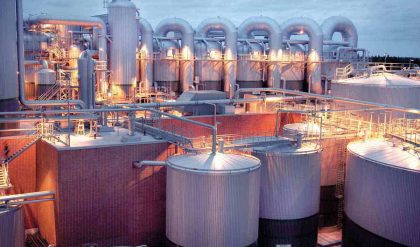Obtaining work from two thermal sources at different temperatures is used to produce movement, for example, in thermal engines or alternators used in the generation of electrical energy. Performance is the main parameter that characterizes a thermodynamic cycle. The performance is defined as the work obtained divided by the heat spent in the process, in a same time of complete cycle if the process is continuous. This parameter is different according to the multiple types of thermodynamic cycles that exist, but is limited by the Carnot factor or performance.
A reverse thermodynamic cycle seeks the opposite of the thermodynamic cycle of obtaining work. External work is provided to the cycle to ensure that heat transfer occurs from the coldest to the hottest source, unlike how it would tend to happen naturally. This arrangement is used in air conditioning and refrigeration machines.
There are many types of thermodynamic cycles. Here are some of the featured examples:
ORGANIC RANKINE CYCLE
The Organic Rankine Cycle is a model for predicting the operation of a steam turbine system. That model uses a high molecular weight organic fluid with a phase change from liquid to vapor or boiling point, which happens at a lower temperature than the change of phase from water to steam.
The use of these fluids allows the use of the Rankine cycle for the recovery of heat from lower temperature sources, such as the combustion of industrial waste, geothermal heat, solar thermal collectors, etc. This source of lower temperature becomes useful work, which in itself can be converted into electricity.
DIESEL CYCLE
The diesel engine is a thermal engine that has alternative internal combustion that is produced by the self-ignition of the fuel due to high temperatures derived from the high compression ratio it has, according to the principle of the diesel cycle. The thermodynamic cycle used by the Diesel engine is the Diesel cycle.
The diesel engine can use gas oil / gas oil or heavy oils derived from petroleum, as well as natural oils such as sunflower oil, as well as being very efficient in thermodynamic terms; the best and most developed diesel engines reach a value between 45% and 55% of thermal efficiency, a very high value in relation to almost all the engines of explosion; It is one of the most used engines since its creation in various applications.
STIRLING CYCLE
The Stirling hot air engine or simply the Stirling engine is an alternative external combustion engine, invented by Robert Stirling in 1816. The operation of the engine is described in the Stirling thermodynamic cycle.
The Stirling engine is an evolution of the hot air engines that were used in England during the first industrial revolution. In particular, Stirling’s invention involved the adoption of a heat recovery unit, a device that made it possible to significantly improve the performance of the engine.
ERICSSON CYCLE
The Ericsson cycle is named in honor of John Ericsson, who designed and built heat machines based on several thermodynamic cycles. J. Ericsson invented two cyclic heat machines and developed practical machines based on these cycles. Its first cycle is known as the “Brayton closed cycle”, while its second cycle is called “Ericsson cycle”.
The Ericsson cycle is an ideal thermodynamic cycle composed of four reversible processes, two isothermal transformations and two isobaric transformations. This describes the theoretical operating cycle of a type of thermal engine called the Ericsson engine. The Ericsson cycle has similarities with other main cycles, such as the Stirling cycle and the Brayton cycle.


Comments are closed.